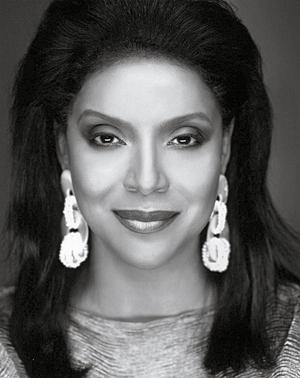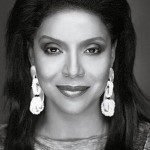Women’s History Museum: Reclaiming Missing Half of the Story
By • October 21, 2013 0 1451

In many ways, even though there is still no such thing as an actual, physical place called the National Women’s History Museum, it’s been something of a banner year for NWHM supporters, who number in the hundreds of thousands.
You could see it in the spring when legislation to create a federal commission to determine the feasibility of constructing a National Women’s History Museum was introduced by Rep. Carolyn Maloney, D-N.Y., and Del. Eleanor Holmes Norton, D-D.C., with Sen. Susan Collins, R-Maine, introducing a companion bill in the Senate. The hope is through successful lobbying for the legislation and private funding that a museum will rise and come to fruition hopefully within five to seven years, and that women would be the principal designers and architects.
You could see it in May, when Joan Bradley Wages, president and CEO of the National Women’s History Museum, and Steven Knapp, president of the George Washington University, signed a memorandum of agreement to collaborate on public programs that will engage the local community on topics of historical relevance to women, called “Initiating Change/Adapting to Change.” The first program took place Oct. 2 with a lecture focusing on the hot topic issue of women in the military, a forum on “A New Order: Change for Women in the U.S. Military,” with Leisa Meyer of the College of William and Mary and retired USAF Brig. Gen. Wilma Vaught, president of the board of directors of the Women in Military Service for America Memorial Foundation, Inc., moderated by journalist and columnist Eleanor Clift.
An even more vivid manifestation of the identity and effectiveness of the NWHM will take place Wednesday, Oct. 9, with the Third Annual NWH’s presentation of its 2013 Living Legacy Awards, the de Pizan Honors ceremony at the Mead Center for American Theatre at Arena Stage. The event and gala, chaired by former Senator and past president of the Red Cross Elizabeth Hanford Dole, a former de Pizan recipient, and former Virginia First Lady Lynda Bird Johnson Robb, daughter of President Lyndon Johnson.
The honors are named after Christine de Pizan, a 15th-century Western woman and author of “The Book of the City of Ladies,” written in 1405, which was written to combat existing ideas about women’s nature, making her the first woman to chronicle women’s history at a time when women appeared to have no documented place in history. The honors were created in 2011 to recognize women of historic achievement.
This year’s award recipients are Washington native and renowned mezzo soprano Denyce Graves, breast cancer pioneer radiologist Etta D. Pisano, environmental preservationist Sally Jewell, and Tony Award-winning actress and television legend Phylicia Rashad.
To get a full sense of the spirit of and the hope for the National Women’s History Museum, you might want to check out Wages, who has since the beginning of the creation of the museum as an organizational institution in 1996 has been its most tireless and public face. Wages, as head of the NWHM, is its most vocal and visible supporter. Smart and charming, she brought her lobbying experience in Washington with her Alabama background, an admitted stubbornness, to the mission of helping to create a museum that highlighted the achievements and the cause of women, many of them forgotten .
“Officially, the NWHM has existed since 1996,” said Wages, a former lobbyist and public relations executive. “But before that, a group of women, headed by our founder Karen Staser, were brought together, sitting and talking together where we lived and we had all noticed the absence of not just a women’s museum, but statues, dedicated spaces, things like that, which celebrated the achievements of women. I know we have women’s history month, gender studies and the like, where you certainly find out just how forgotten women are in the annals of historical achievement.”
One of the first things—at the beginning—was getting the statue of women’s suffragettes moved from a crypt into the rotunda of the U.S. Capitol. That was in 1997, and it was the first success of the NWHM, of which Wages is a founding board member. “That statue—it’s pretty powerful—wasn’t being seen by anyone,” Wages said. “We worked with other women’s group. Now, Lucretia Mott, Elizabeth Cady Stanton, and Susan B. Anthony can be seen my millions every year.” Then, House Speaker Newt Gingrich took time out from the big budget negotiations that year to attend the congressional ceremony honoring the women.”
“I probably didn’t know what I was getting into, or the difficulties involved in this, but I do have a certain stubbornness,” Wages said. “We, all of us are committed to this, to have a women’s museum on the Mall.”
Past recipients of the de Pizan honors include poet Maya Angelou, photographer Annie Leibovitz, Yahoo president Marissa Mayer, broadcaster Cathy Hughes, medical pioneer Helen Greiner and actress Meryl Streep.
Legendary documentary producer Ken Burns will receive the Henry Blackwell award. “Dr. Pisano, Denyce Graves, Phylicia Rashad, Sally Jewell and Ken Burns, each represent the type of world-changing accomplishments that carry on de Pizan’s groundbreaking work of documenting and highlighting women’s achievements,” Wages said.
What would a National Women’s History Museum look like? It’s hard to say, but a part of what the institution and organization does is “to research, collects and exhibit the contribution of women to the social, cultural, economic and political life of our nation in a context of world history,” per its mission statement.
The results of that mission—while not yet in a physical building—makes itself felt on the NWHM’s website in an archive of exhibitions that reveal a range of diversity and subject matters to enrich all. Some of the subjects have included the role and progress of African-American women, women publishers, printers and journalists, a century’s history of women entrepreneurship, women reform leaders, women in industry, women who ran for president, women in World War II, an exhibition entitled “Daring Dames,” women in early film, spies in American history, women in motherhood, early Jewish American women and more. These are the kinds of exhibition that could easily fill a museum, just for starters. And Wages, no question, will be there when that happens.
- Yelp
- Phylicia Rashad






